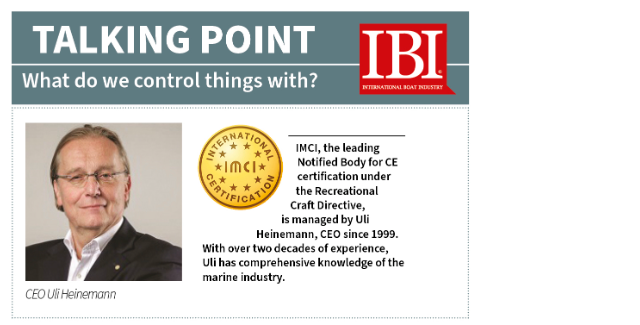TALKING POINT on IBI
What do we control things with?The popular Recreational Craft Directive (RCD) requires that all components listed in Annex II have to be given their own CE mark if they are not manufactured by the boatbuilder but by a component manufacturer as a series product. This includes, among others, “(3) Steering wheels, steering mechanisms and cable assemblies”.
With regard to the terms “steering wheels” and “cable assemblies “ there’s little problem when it comes to interpretation - everyone knows what is meant.
However the term “steering mechanism”, is somewhat vague. It is obvious to everyone that this refers at least to the ensemble of rudder blade, rudder stock, tiller or quadrant together with the actuation of all of them – everything from the rudder blade to the helmsman’s hand, so to speak.
- But, is a product that combines steering, shifting and throttle in one single device a product that falls under Annex II (3) of the Directive?
- Is that a “mechanism” at all?
- What level of mechanics and/or electronics need to be built in to require a CE mark or not?
- What about dynamic positioning systems?
The EU Commissions Application Guide for the RCD does not give clear information. The RSG Guidelines however, together with the EN ISO 25197:2020 standard “Small craft - Electrical/electronic control systems for steering, shift and throttle”, do offer some help. On the one hand, the standard covers requirements for electrical or electronic systems for steering, gear shifting and speed control, as well as dynamic position control systems or combinations thereof. On the other hand, since it also includes requirements for testing the loads of both mechanical and electrical systems, with the option of using the calculation for rudder loads, The RSG considers such a system in this case to be a “mechanism”.
Ultimately, RSG concludes that all products that fall within the scope of EN ISO 25197 and combine steering, shifting and throttle in a single device are products according to Annex II (3) and therefore require CE approval.

